Strangely, my visit to the Krakow Ghetto and Auschwitz – Birkenau brought to mind some old Star Trek episodes. In various versions of Star Trek, there are episodes where the Enterprise and her spacefaring crew run into a far superior alien race that judges humans to be a war-like, needlessly violent species and a substantial threat to galactic peace. The aliens decide their best course of action is to eliminate the whole human race. However before judgment can be carried out, Captains Kirk or Picard or whoever is commanding the Enterprise, demonstrates to the aliens redeeming qualities that earn humankind a reprieve. Whew!
Those episodes are fiction of course. In reality, if an encounter occurred as depicted in the TV shows and movies, I believe humans and the Enterprise would be toast. After all, the noble human qualities that would supposedly save the Enterprise were incapable of preventing a nation of highly educated, highly intelligent people from engaging in the mass murder and complete dehumanization of entire groups of people in the name of Adolf Hitler’s view of German nationalism.
Now a reasonable alien might be persuaded to overlook one instance of such horrific behavior. Unfortunately human history is full of them. Modern examples include, the Killing Fields of Cambodia, mass murders in the Balkans, genocide in Rwanda, the genocide and subjugation of native populations in the Americas, African slavery, the Rohingya in Myanmar, the purges in Russia and China, and on and on. No race, religion, or culture seems to be immune. It is human nature that is part of us all.
For an alien race, though, I think the final nail in our coffin would not be how humans treat each other, it would be the way humans have intentionally or negligently caused the extinction or near extinction of countless species because of our perceived need for protection, sport, convenience, or food. We showed those species no mercy, and in most cases didn’t give these extinctions a second thought.
The point of my Star Trek metaphor is that when viewing the photos below, remember that you are viewing the work not of aliens or monsters but fellow Homo Sapiens with whom we all share the same physical and psychological makeup. It is a warning to all.
Krakow Ghetto
Before the German invasion of Poland in September, 1939, the Jewish population of Krakow was 60,000 to 80,000. Jews had lived there since the 13th century. The German persecution of the Jews began immediately upon entering Krakow on September 6, 1939. It was not until March 3, 1941, that the Jewish ghetto was created by German decree. The ghetto was established in Podgorze, a Krakow suburb at that time, rather than the traditional Jewish Quarter of Kazimierz. Of the 68,000 Jews who were moved into the ghetto over the years, only 3,000 survived the war.
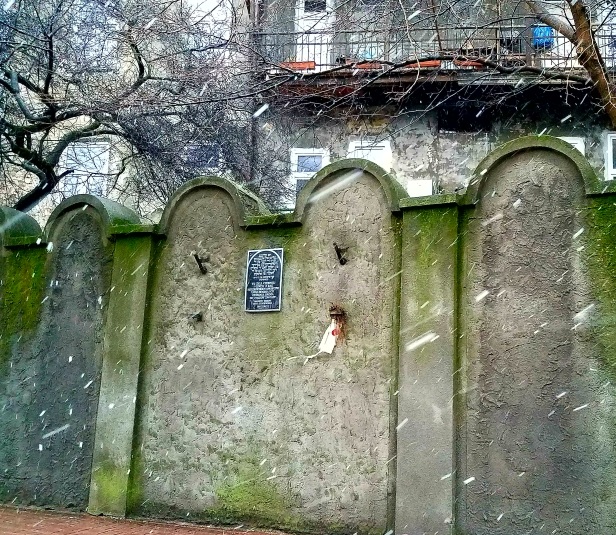

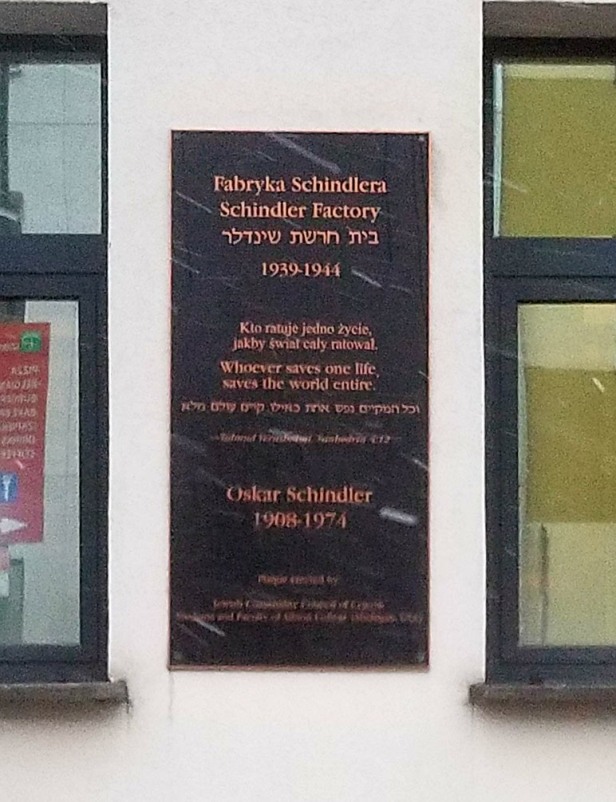

Auschwitz-Birkenau
Auschwitz, the largest and most lethal German concentration camp, is only an hour’s drive from Krakow. Auschwitz is actually several camps and subcamps. Auschwitz (Auschwitz I) was the first and primary camp primarily used for forced labor. Birkenau (Auschwitz II) was an extermination camp. It lies a few kilometers from Auschwitz I.
Auschwitz I and II are open to visitors. They comprise the Auschwitz-Birkenau Memorial and Museum. It is open 07:00 until dusk daily except for Christmas, New Year’s Day and Easter. Admission to the grounds and museum is free. There are a wide range of individual and group guided tours lasting from 3.5 hours to two days. See the museum website for prices.
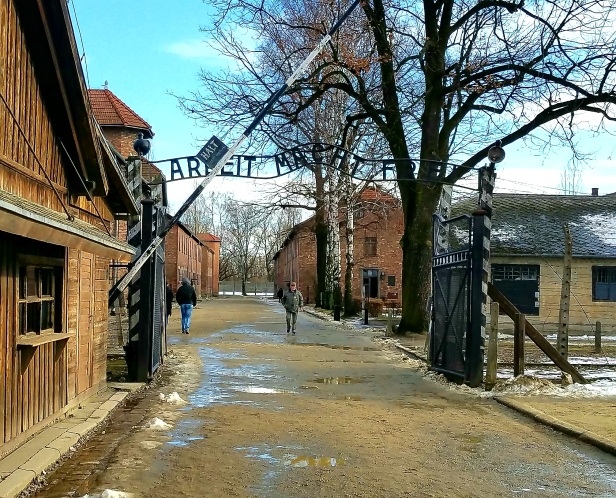


That this was originally a Polish Army barracks explains why the buildings at Auschwitz are so well constructed. They looked to still be in fine shape more than 70 years after the end of the war.


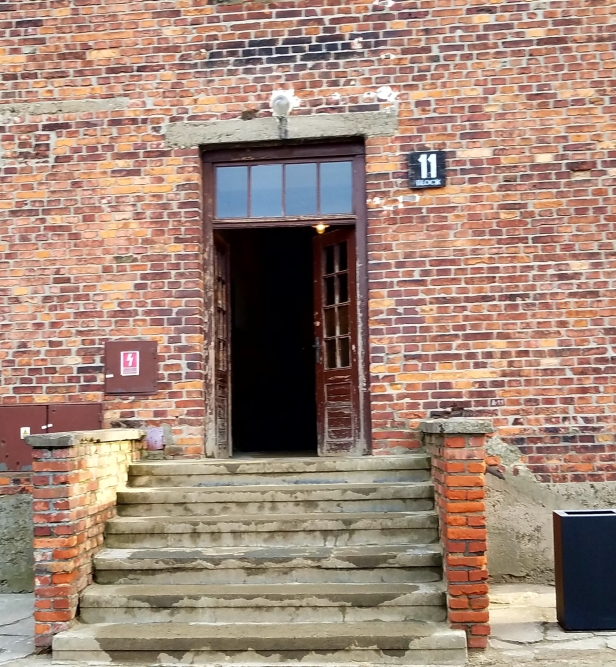




Auschwitz had a small gas chamber and crematorium where experiments with Zyklon B proved its suitability for mass executions.


In the gas chamber my skin was crawling big time. I left p.d.q. Getting to the adjoining crematorium was a “relief.”

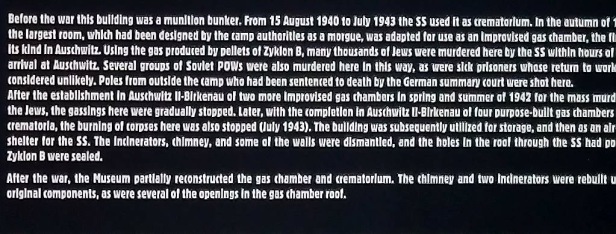
Birkenau (Auschwitz II)
The Birkenau facility is 2.5 kilometers from Auschwitz. A shuttle bus connects the two locations. Birkenau was a death camp. It opened in 1942, and was most active as an extermination camp between March and July 1944. The last mass executions occured on October 30, 1944.

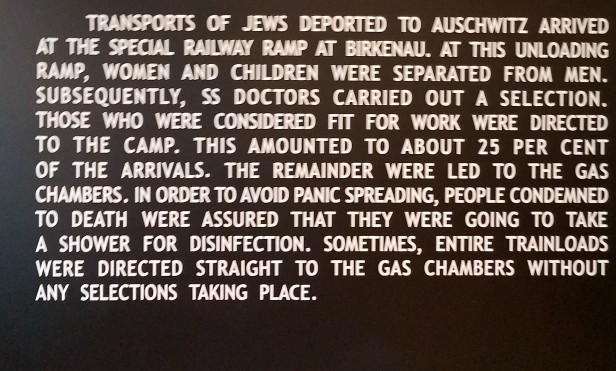


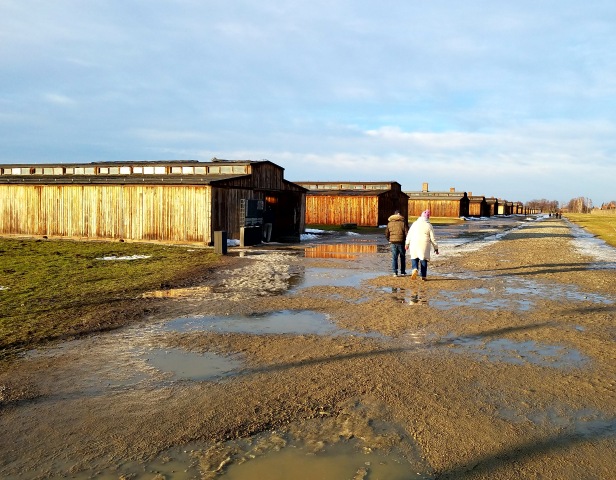

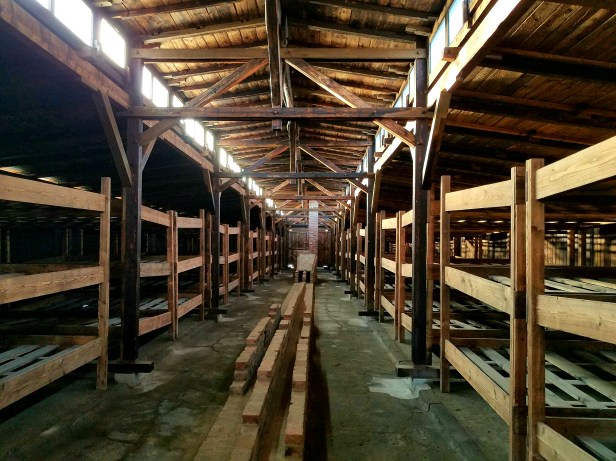





Overall Impression
How is it possible that less than 80 years ago one of the most advanced countries in the world systematically executed six million men, women, and children? That answer is not as important as the fact that it actually happened. The legacy of Auschwitz-Birkenau along with other genocides, crimes against humanity, and mass atrocities is that such horrible behavior is well within the capability of human nature. It can happen again.
If you were the commander of the superior alien species, would you find sufficient redeeming qualities to give humans and the Enterprise a break or would you waste them?

I visited there in 2017, but unfortunately didn’t get to the 2nd part, so it’s good to see your pictures of it. I will have to go back anyway so will get there eventually. I wrote about y visit here if you are interested, no worries if not. https://fragglerocking.org/2017/05/28/poland-april-2017-auschwitz/
LikeLiked by 1 person
I really liked your report and pictures. Thanks for sharing. I did not go with a group tour or use the headsets. The photos and captions were enough to provide a pretty good explanation. The guides no doubt add to the experience. On the other hand groups can be a pain.
LikeLiked by 1 person
Certainly we’re that day! Will go back in quieter times. Cheers.
LikeLiked by 1 person
powerfully written report!
LikeLiked by 1 person
Anyone who knows the pyramids were not built by men pushing blocks in the desert- welcome aboard. Everyone else destroyed-especially the scumbag Holocaust deniers.
LikeLiked by 1 person
It is against the law in Poland to deny the holocaust. Thanks for your comment.
LikeLiked by 1 person